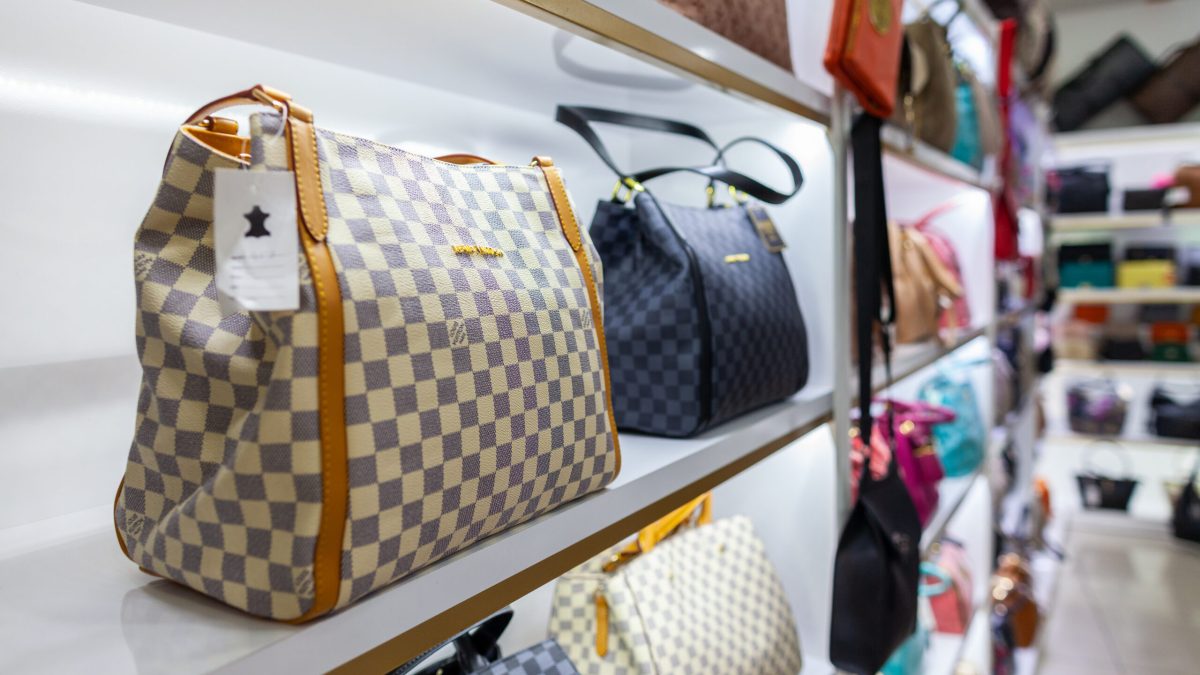India’s luxury market is experiencing significant growth, with international brands like Louis Vuitton, Hermès, and Christian Louboutin expanding their presence in the country.
However, this surge in demand has also created a fertile environment for counterfeiters, who are capitalizing on the growing aspirations of India’s emerging middle class and affluent elite.
From bustling markets in Kolkata to Instagram reels featuring “dupes” of high-end designer items, counterfeit luxury goods have become an integral part of India’s retail landscape.
Despite strict laws and high-profile court cases, counterfeiters continue to thrive, taking advantage of gaps in enforcement and the consumer desire for more affordable luxury.
Luxury brands expand as counterfeits multiply
India’s luxury market is projected to grow at a compound annual rate of 3.16%, reaching $17.6 billion in 2024, according to Statista.
This expansion has spurred international brands to invest in premium retail spaces like Mumbai’s Jio World Plaza, a four-story luxury mall featuring butler services and personal shoppers.
Source: Statista
Yet, just miles away, markets like Heera Panna offer counterfeit versions of the same luxury goods at a fraction of the cost.
For example, Christian Louboutin’s iconic spiked loafers, which retail for $1,800, have been found in counterfeit markets for just $180.
Despite efforts by brands to crack down on fake goods, six Indian markets, including Delhi’s Palika Bazaar and Kolkata’s Fancy Market, have been flagged by the US Trade Representative as “notorious markets” for counterfeits.
These hubs cater to a wide audience, selling everything from fake Louis Vuitton bags to Rolex watches.
Counterfeiters adapt to online sales
Social media has revolutionized counterfeit luxury sales in India.
Platforms like Instagram have become hotspots for counterfeiters, who promote items as “AAA” quality or “first copies.”
These sellers collaborate with influencers, creating a sophisticated marketing ecosystem that attracts buyers across demographics.
One seller, operating from Delhi, runs an Instagram account with over 127,000 followers.
By unboxing counterfeit Balmain jackets and Chanel dresses in reels, he avoids using explicit hashtags to bypass algorithms while targeting a tech-savvy audience.
Such operations thrive on platforms like IndiaMart, where manufacturers offer to replicate designer items showcased at global fashion weeks.
Luxury brands have taken legal action to combat counterfeiting, but victories are often short-lived.
Christian Louboutin recently won a case against an Indian shoe boutique, Shutiq, which was found manufacturing knockoffs of its spiked loafers.
India’s intellectual property laws, aligned with the WTO’s TRIPS agreement, impose fines and jail terms for counterfeiters.
Yet, enforcement remains lax due to lenient penalties and a lack of prioritization by authorities.
Aspirational demand fuels counterfeit growth
India’s aspirational middle class, which constitutes 31% of the population, earns an average annual income of 1.3 million rupees ($15,400).
For many, owning a luxury item is a status symbol, yet out of reach financially. A survey revealed that 89% of Indian consumers purchase counterfeit luxury items due to affordability and social motivations.
Counterfeit goods offer the allure of exclusivity without the high price tag.
For India’s millennials and Gen Z, who are set to comprise half the population by 2030, counterfeit items provide a way to keep up with fast-changing trends.
However, even affluent customers fall prey to fakes.
Counterfeit hubs: From Kolkata to Guangzhou
Kolkata’s Fancy Market is a microcosm of India’s counterfeit trade, offering “mirror copies” of brands like Fendi, Gucci, and Rolex.
A $14 trip to Guangzhou enables counterfeiters to source high-quality replicas, which are then shipped back to India at a nominal cost.
These items are marketed as showroom-quality products, complete with fake QR codes and branded packaging.
Despite occasional police raids, counterfeiters operate with impunity.
Counterfeit goods impact more than just luxury brands.
A report by FICCI CASCADE estimates annual tax losses from counterfeits in sectors like alcohol, tobacco, and FMCG at $7 billion.
Counterfeit auto parts, responsible for 20% of road accidents, and fake antibiotics further underline the public safety risks.
Moreover, counterfeit operations have links to organised crime.
During one investigation, counterfeit products were found to be routed through websites hosting illicit content, including child pornography.
The uphill battle for brands
Despite their best efforts, luxury brands face an uphill battle against counterfeiters.
Brands like LVMH and Gucci employ dedicated teams of lawyers and investigators to monitor counterfeiting activity.
However, many prefer to keep these efforts under wraps, fearing that publicizing counterfeits could tarnish their image.
Meanwhile, technology solutions like QR codes and holograms have been deployed to authenticate genuine products.
However, counterfeiters have adapted quickly, producing fake QR codes that mimic original product details.
This constant cat-and-mouse game between brands and counterfeiters shows no signs of slowing down.
As the demand for branded goods grows, so too does the ingenuity of counterfeiters.
From social media influencers to sophisticated logistics networks, counterfeiters have turned the trade into a low-risk, high-reward enterprise.
For luxury brands, the road ahead is fraught with challenges. While legal battles and technology offer some respite, addressing the root causes of counterfeiting—economic disparity and consumer awareness—will be essential. Without stricter enforcement and consumer education, counterfeiters will continue to cash in on India’s luxury boom.
The post How counterfeiters are profiting from India’s booming luxury goods market appeared first on Invezz

